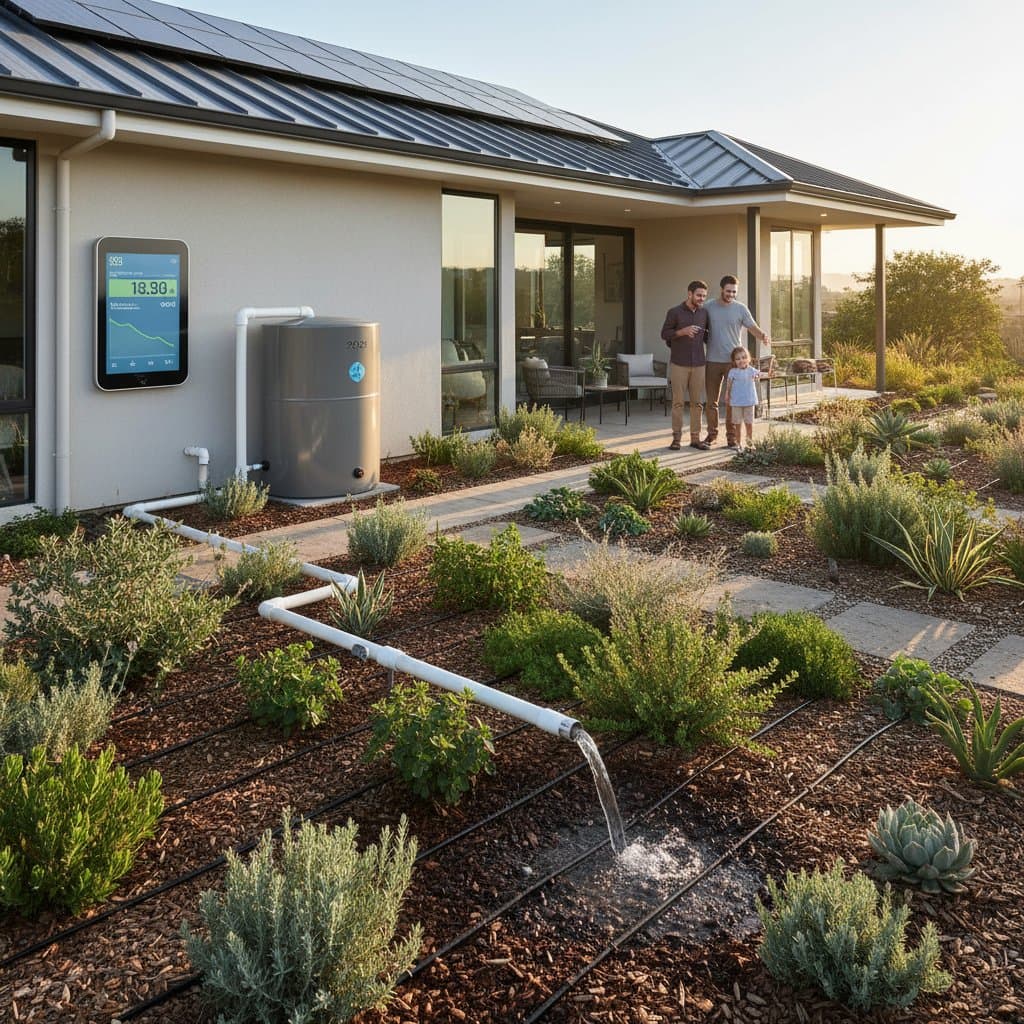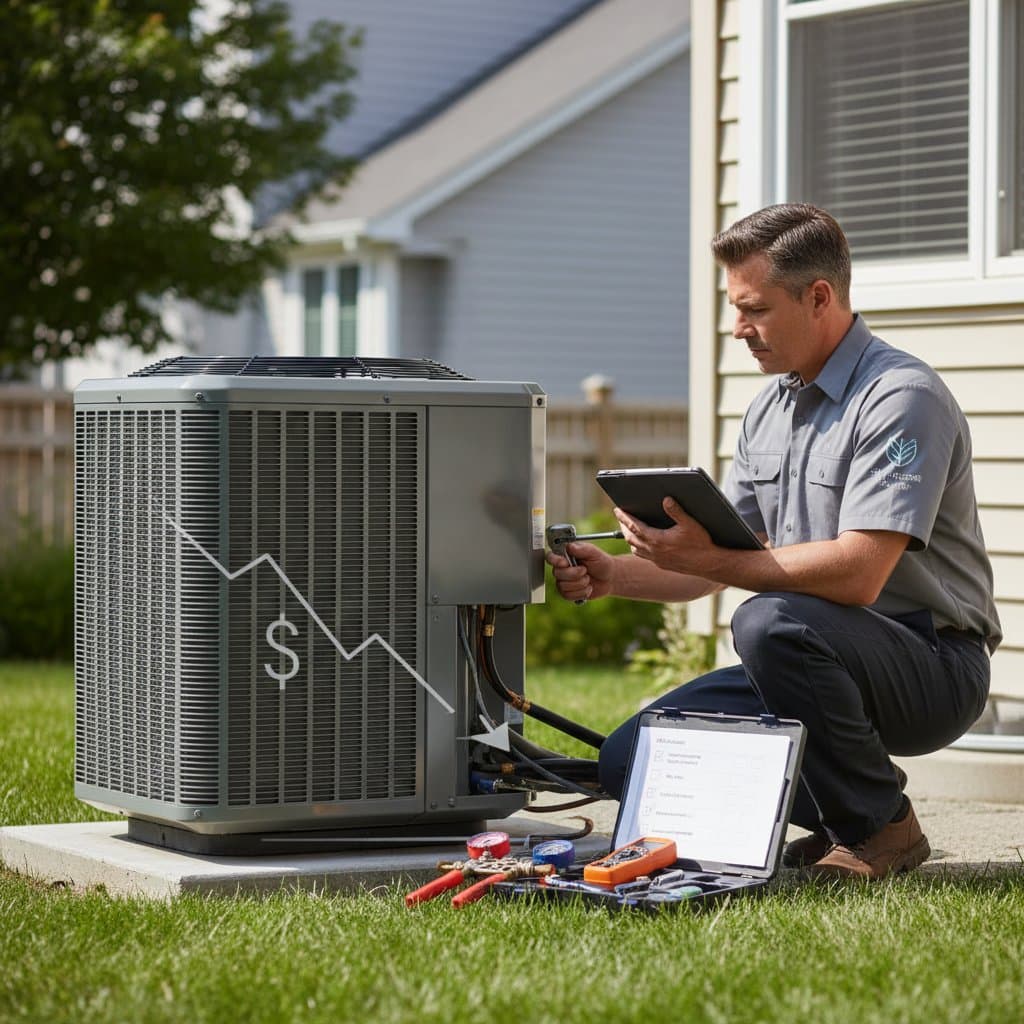What 2025 Buyers Need to Know About Generator Costs
Power outages strike at inconvenient moments, such as during storms that topple lines or grid overloads that disrupt service. These events can stop cooking, heating, and other essential activities. Increasing numbers of homeowners turn to backup generators to maintain operations when electricity fails. However, the true cost of a generator extends beyond the initial price tag to include installation, fuel choices, and ongoing maintenance, leading to significant variations in total expenses.
This guide provides a comprehensive overview for prospective buyers. It covers realistic cost estimates, installation essentials, and strategies for selecting the optimal system to match home requirements.
The Quick Answer: Average Generator Costs
For typical residential applications, a complete backup generator setup falls between $2,000 and $20,000, influenced by model type, capacity, and installation approach.
The following table offers a snapshot:
| Generator Type | Typical Power Output | Installed Cost Range | Best For |
|---|---|---|---|
| Portable Generator | 2,000 to 8,000 watts | $500 to $2,500 | Small homes, occasional outages |
| Inverter Generator | 1,000 to 4,000 watts | $800 to $3,000 | RVs, camping, small appliances |
| Standby Generator | 7,000 to 24,000 watts | $5,000 to $20,000 | Whole-home backup, frequent outages |
This broad spectrum arises from multiple pricing factors. Buyers who grasp these components can select systems that align precisely with their priorities.
Understanding Generator Types
Portable Generators
Portable generators represent the most economical entry point. Units generally range from $400 to $1,200, with an optional transfer switch installation adding $500 to $1,000. These devices operate on gasoline or propane and deliver sufficient output for key items like a refrigerator, basic lighting, and a compact heater.
Pros
- Affordable initial investment
- Simple to transport and store
- No need for fixed installation
Cons
- Operation must occur outdoors to avoid carbon monoxide accumulation
- Manual activation required for each outage
- Restricted runtime due to fuel limitations
Best for: Property owners seeking interim power solutions or those in rental situations where permanent setups prove unfeasible.
Inverter Generators
Inverter generators excel in low noise levels and fuel economy. They supply stable, pure power that safeguards sensitive devices. Mid-sized units with 2,000 to 4,000 watts typically cost $800 to $3,000.
Pros
- Silent and energy-efficient performance
- Suitable for electronics and delicate appliances
- Portable design with reduced weight
Cons
- Insufficient capacity for full household demands
- Elevated price relative to output compared to standard portables
Best for: Individuals requiring subdued, targeted backup for specific circuits or remote applications.
Standby Generators
Standby generators mount permanently outdoors and activate seamlessly upon detecting a power loss. Fueled by natural gas or liquid propane, they can energize an entire residence. A standard 14-kilowatt unit, including installation, costs $8,000 to $12,000. Models from 22 to 24 kilowatts escalate to $15,000 to $20,000.
Pros
- Hands-free automatic startup
- Comprehensive home coverage
- Extended durability under regular upkeep
Cons
- Substantial starting expense
- Demands expert setup and regulatory approvals
- Ongoing servicing essential
Best for: Residents in outage-prone regions or remote workers dependent on continuous electricity.
Installation Costs and Requirements
Installation expenses hinge on electrical configurations, fuel sources, and regional regulations. Portable units might require only an interlock kit, whereas standby systems necessitate a concrete foundation, transfer switch, and fuel linkage.
For standby installations, costs break down as follows:
- Concrete pad or base: $150 to $400
- Automatic transfer switch: $400 to $1,200
- Gas line installation: $300 to $1,000
- Electrical wiring and permits: $500 to $2,000
- Labor and testing: $1,000 to $3,000
Professional services for these elements commonly total $3,000 to $6,000 atop the unit price.
Code tip: Local authorities adhere to the National Electrical Code (NEC) and mandate a minimum 5 feet of clearance from windows or vents for standby unit positioning.
Fuel Options and Operating Costs
Selecting a fuel type affects setup expenses and sustained operations.
- Gasoline: Least expensive upfront, yet prone to degradation and carburetor issues over time.
- Propane: Cleaner combustion with indefinite storage, though hourly rates exceed gasoline.
- Natural Gas: Ties into utility supply for endless operation, at the cost of pricier initial plumbing.
- Diesel: Delivers prolonged runs and robustness, but generates more noise and demands intensive care.
Runtime expenses vary by consumption rates. For instance, a 10-kilowatt unit uses approximately 1.1 gallons of propane per hour or 1.5 gallons of gasoline per hour, translating to $3 to $6 hourly based on prevailing fuel rates.
Maintenance and Longevity
Portable units endure 8 to 10 years with diligent care, while standby counterparts span 15 to 20 years.
Essential upkeep tasks encompass:
- Oil changes every 50 to 100 hours of use
- Annual air filter replacements
- Semiannual battery checks
- Monthly full-system evaluations
Homeowners often engage technicians for yearly inspections, priced at $150 to $300. Failure to maintain can accelerate wear and invalidate guarantees.
Common Mistakes That Raise Costs
Novice purchasers frequently overlook comprehensive costs or safety protocols. Steer clear of these pitfalls:
- Undersizing the generator. Insufficient capacity leads to overloads. Tally the wattage of priority appliances and incorporate a 20 percent buffer.
- Ignoring ventilation requirements. Prohibit indoor or window-adjacent use of portables; carbon monoxide poses lethal risks.
- Skipping the transfer switch. Direct cord connections risk hazards and equipment harm.
- Overlooking permits. Certain areas insist on pre-connection reviews for standby fuel and electrical integrations.
- Neglecting maintenance schedules. Outage breakdowns often stem from stale fuel or delayed servicing.
DIY or Hire a Pro?
Safe setup of compact portables falls within reach for those adhering to guidelines. Essential tools include:
- A 14-gauge or heavier extension cord suited for exterior conditions
- Fuel stabilizer for gasoline variants
- A manual transfer switch for household circuit integration
Standby installations warrant certified professionals, including electricians and plumbers for fuel lines. Errors in connections threaten safety, and warranties often stipulate expert involvement.
Accessibility and Emergency Readiness
For those with mobility challenges, automatic standby units offer reassurance by operating independently, sustaining medical equipment, elevators, and climate controls. Position control panels no higher than 48 inches from the ground to comply with accessibility norms.
Individuals using assistive devices should ensure 36 inches of unobstructed space around the unit and refueling areas for secure navigation.
Cost-Saving Strategies
Implement these approaches to control expenditures:
- Right-size the system. Align capacity with genuine demands to avoid excess purchasing.
- Opt for partial backup. Safeguard critical items like refrigeration, drainage pumps, and illumination rather than all circuits.
- Schedule offseason installation. Service providers frequently reduce rates in non-peak seasons.
- Maintain regularly. An investment of $200 in servicing averts potential $2,000 repairs.
- Use energy-efficient appliances. Reduced loads permit smaller generators and lower fuel use.
Steps to Secure Reliable Power
Acquiring a generator constitutes a strategic commitment to resilience and well-being amid disruptions. Begin by inventorying devices and systems requiring support, then compute aggregate wattage needs. Evaluate options within financial limits.
Post-installation, conduct monthly tests and stock fresh fuel. These practices guarantee preparedness for impending weather events.





